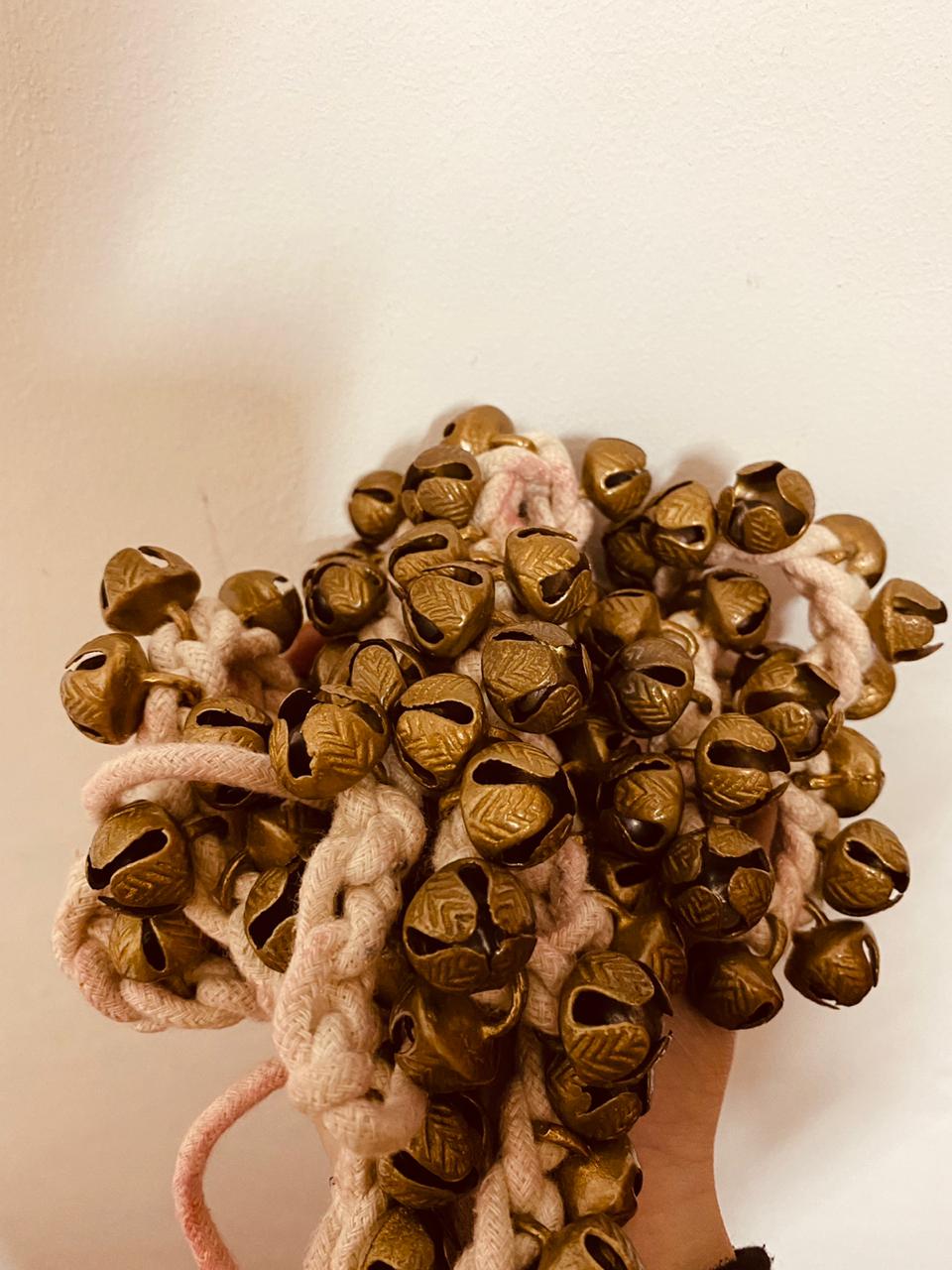Ghungroo
Worn for various dance forms, ghungroos comprise several metallic bells strung together (worn above the ankle) to produce a melodic sound. Not only do they add rhythm to the performance, but also allow the audience to listen to the foot movements. One pair can contain 50 to 200 small ghungroos, depending on the expertise of the dancer. With references to this ornament present in poetry, literature and cinema, it gained major popularity through its representation in the courtesan culture.
It is fascinating that kathak is the only classical dance form in which the bells of the ghungroos are always woven in a thick string. The word kathak is derived from two Sanskirt words: katha (story), and katthaka (storyteller). The origins of this Indo-Persian dance are debated; however, references are found in both ancient and medieval texts. Presently, there are three schools (gharanas) of kathak: Jaipur, Banaras and Lucknow.
The emergence of colonial rule changed the landscape of these classical dance forms, including kathak. There came to be a social stigma attached to the performers. In fact, Christian missionaries launched an anti-dance movement in the 1890s to express their opposition and try to put a stop to these performing arts. It is only through the constant efforts of the practitioners that they have been able to revive and are still thriving in the modern world.
The contributor has performed kathak using these ghungroos, which have been in her possession for about 7 years.
Contributed By :
Aanya Wig
